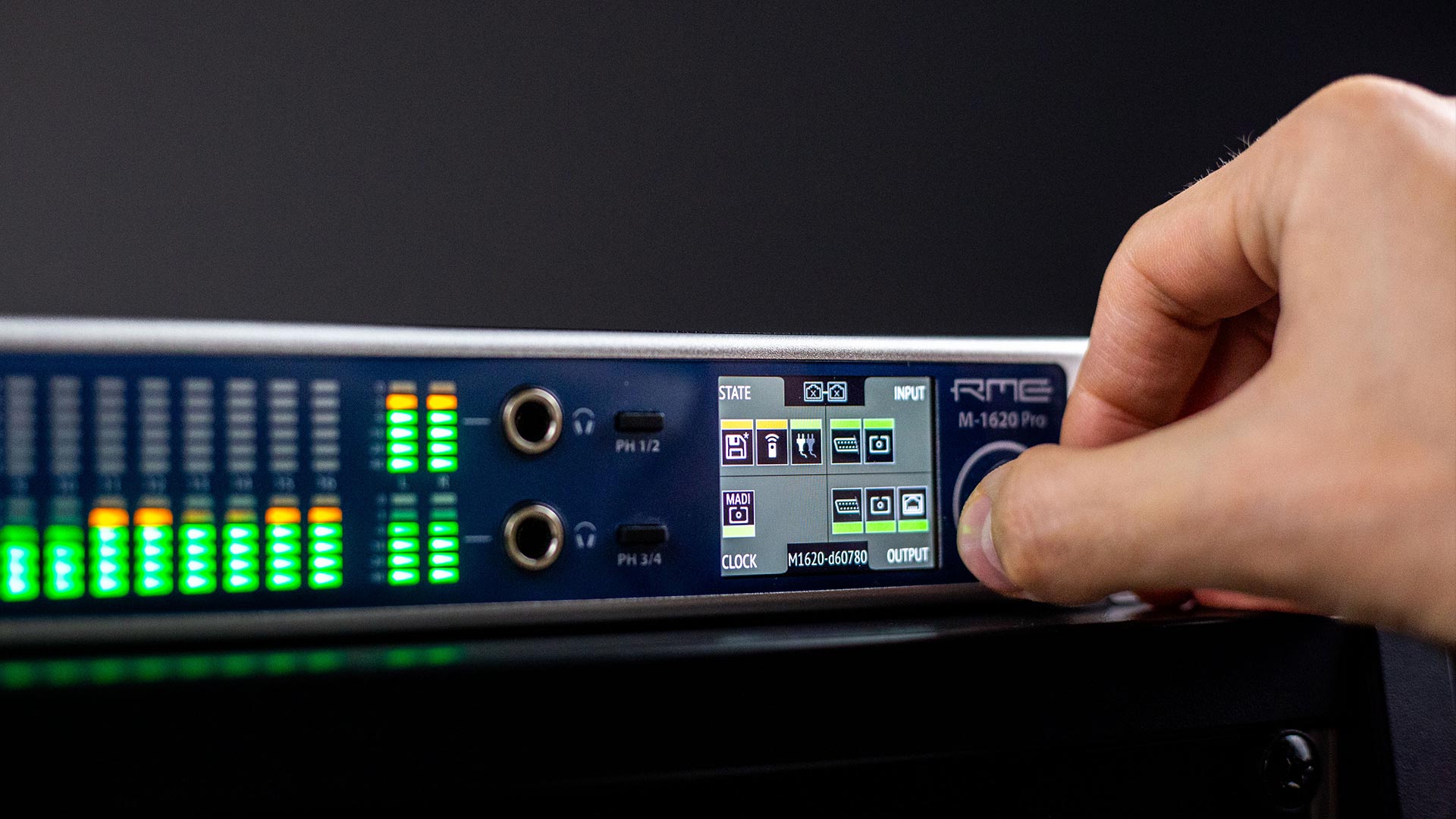
Take a tour of RME’s updated reference-class converter
The M-1620 Pro is the latest versatile AD/DA and format converter from RME.
Featuring 16 channels of A to D and 20 channels of D to A (including the headphone outputs), the M-1620 Pro combines high-end audio conversion with flexible digital connections; powerful control and routing options; and RME’s renowned, rock-solid reliability.
An update to RME’s M-1610 Pro converter, the M-1620 Pro expands RME’s range of cutting-edge AoIP devices, offering high-precision line-level I/O for use with the next-generation of audio networks, as well as providing ADAT and MADI-based systems with additional reference-level I/O.
Watch our video below for an introduction to this classy, transparent new AD/DA from RME Audio.
See more videos at Synthax TV
Overview
Designed for professional recording studios, live sound, installation and broadcast setups requiring the utmost in audio precision, the M-1620 Pro comes in two models – one featuring MILAN-certified AVB, and another for use with Audinate’s Dante networking protocol.
Additional features include SteadyClock FS clocking technology, dual on-board headphone connections, and fully DC-coupled outputs, allowing the M-1620 Pro to be used as part of a high-end modular synth setup.
A selection of built-in redundancy features ensures seamless operation and reliability for use in live music, events and broadcast, including dual network and optional dual MADI connections, as well as a secondary DC input for power redundancy.

Front Panel
The newly developed front panel features LED level metering for all 16 analogue input and output channels, which can be set to show either Peak or RMS levels.
Another new addition to the M1620 Pro is an extra ¼” headphone port, doubling the available headphone monitoring outputs. Both headphone connections can also be used as balanced mono outputs – or as pairs of unbalanced mono outputs – with individual routing and gain control.
The front panel also features a simple control interface for configuration of device settings, routing and choosing a clock source, similar to that of other RME AoIP devices such as the 12Mic and M-32 Pro Series.
All of the device’s settings are accessible through a simple 4-part menu system, making it ideal for use in standalone applications such as installations, with status alerts any time an issue is detected, such as loss of sync or power.

Rear Panel
The back panel houses all of the M-1620 Pro’s inputs and outputs, for interfacing with a wide range of other professional audio gear.
Any line-level device can be connected, such as audio interfaces, mixing consoles and microphone preamps; other studio hardware including monitors, headphone amps, signal processors and FX units; instruments such as synths, samplers and drum machines; and keyboards and guitar amps that feature line or direct outputs.
The 16 balanced analogue inputs and outputs are available on D-Sub 25 connections, with individual reference levels adjustable between +13, +19 and +24 dBu, for matching with other pro gear.
All of the outputs are fully DC-coupled, allowing the M1620 Pro to be used for sending control voltages to devices such as analogue sequencers, synthesizers and Eurorack modules.
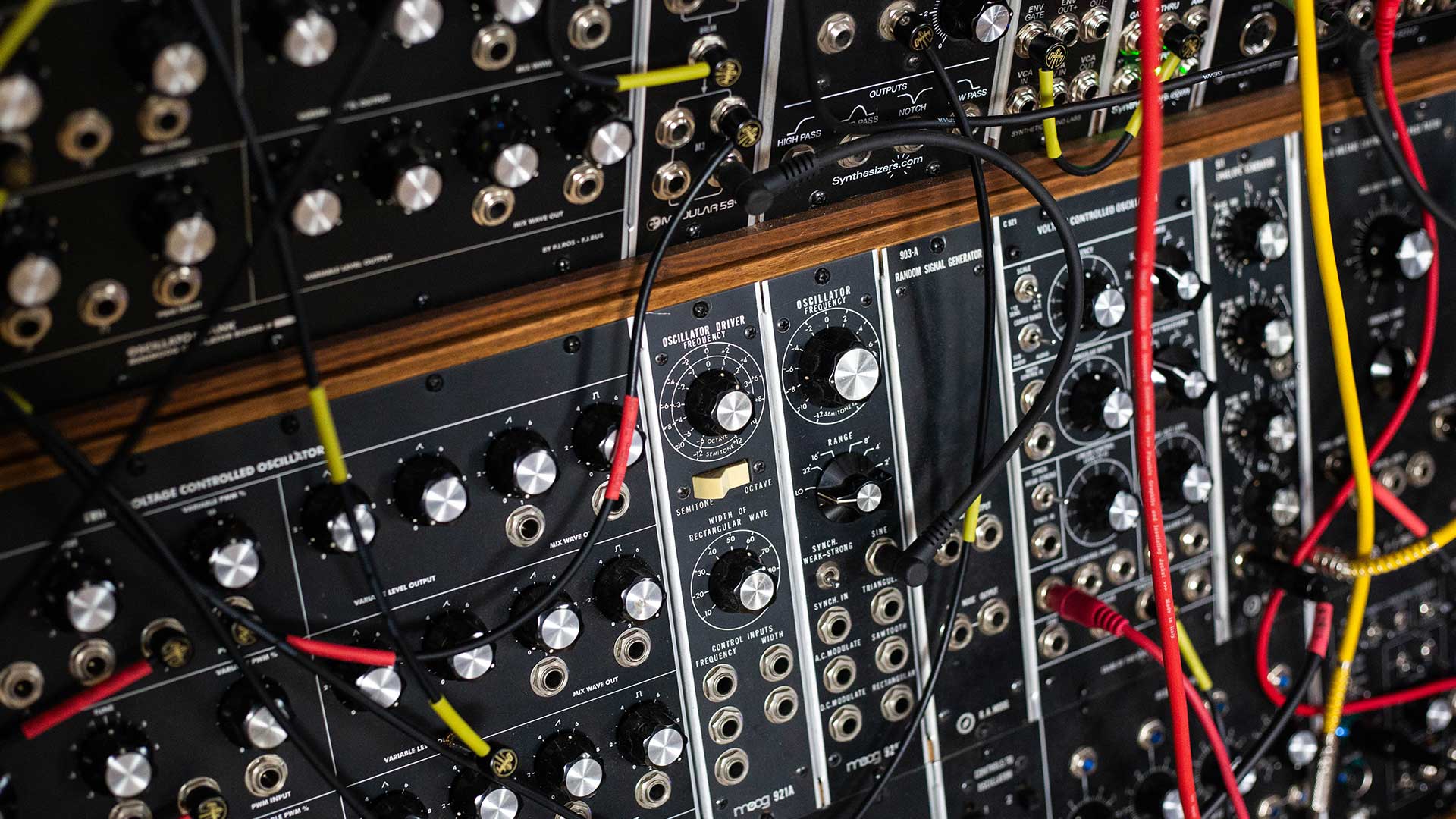
The RME M-1620 Pro has DC-Coupled outputs for working with modular synthesizers and other analogue outboard in the studio.
On the digital side, 4 x ADAT I/O allows for the bi-directional transfer of all 16 channels at common sample rates such as 44.1, 48 and 96 kHz sample rates, or 8 channels each way at 192 kHz.
Coaxial MADI comes as standard on BNC connectors, allowing all 16 inputs and outputs to be transferred at up to 192 kHz sample rates in both directions.
When fitted with one of RME’s optional MADI optical SFP module, the available MADI channels are increased to 128 in each direction. Alternatively, this second MADI connection can be set to mirror the first, providing a backup MADI stream with automatic switchover in the case of a failure.
Redundant power supplies are provided via an IEC mains connection and a 12V DC input, both of which are internally monitored, with warning lights that will trigger if the unit detects a problem.
Finally dedicated Wordclock I/O connections are available on BNC, with a USB port for firmware updates and remote control.
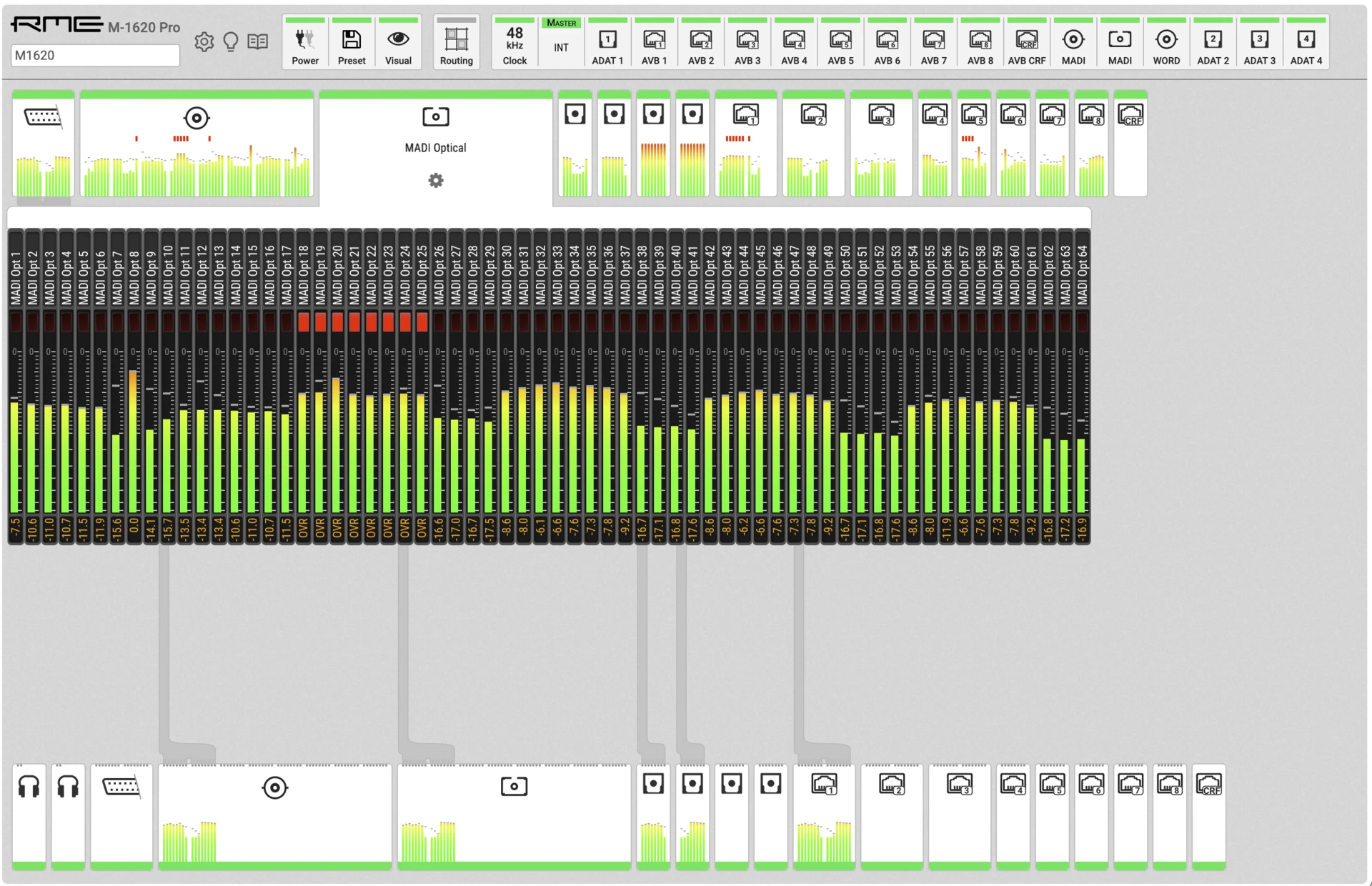
AoIP
Alongside the ADAT and MADI connections, the M1620 Pro also features dual RJ45 network ports, allowing for the transfer of audio over IP.
On the standard M-1620 Pro model, up to 128 audio channels can be sent and received via a single network cable using Audio Video Bridging, aka AVB.
This includes MILAN certification, a subset of AVB created by the AVnu Alliance, which ensures reliable communication with other MILAN-certified devices on the network. The Milan Manager software, a free application developed by L-Acoustics and d&b audiotechnik, can be used for control over the M-1620 Pro’s AVB and network settings (much in the same way that Dante devices use Dante Controller).
For Dante users, the M-1620 Pro D model offers 64 channels of Audinate’s popular networking protocol in both directions, making it a powerful addition to any Dante-based recording studio or live sound setup.
The Pro-D’s dual ethernet ports are designed for Redundancy by default, but can also be set to a ‘Switched’ mode if required, which allows for several units to be daisy-chained via Ethernet.
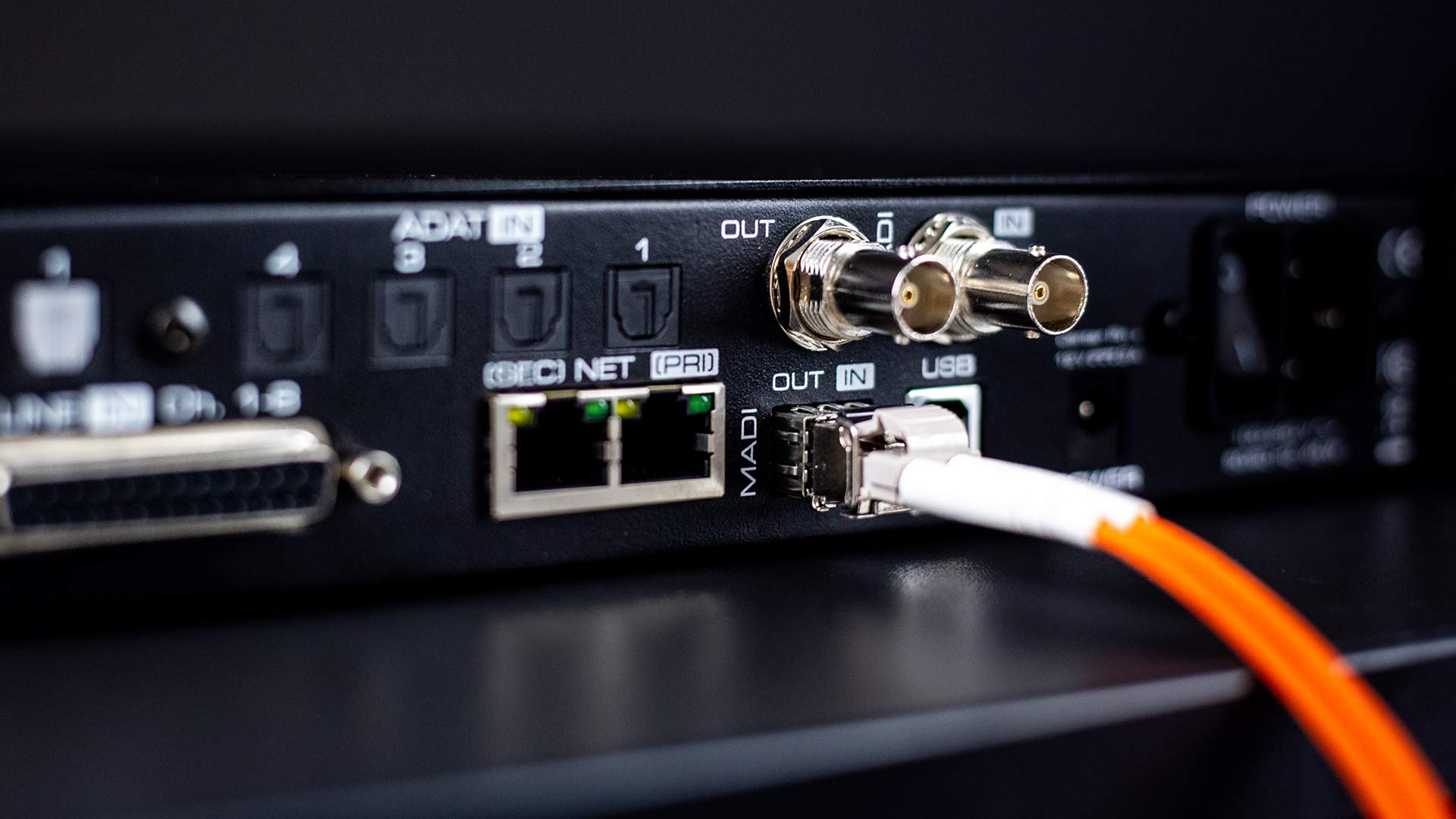
The optional MADI SFP module adds MADI optical connectivity, alongside the ADAT, MADI Coax and Ethernet ports.
Remote Control Options
Remote control is available via the browser-based RME Web Remote, which allows the M1620 Pro to be controlled from any location attached to the network, or directly via USB when connected straight to a Mac or PC.
For users of RME’s TotalMix FX, this controller will feel very familiar – select one, or multiple inputs along the top of the interface, then drag the virtual connection to an output to complete the routing.
Other settings such as clocking, firmware updates, and the saving and loading of presets can also be managed here.
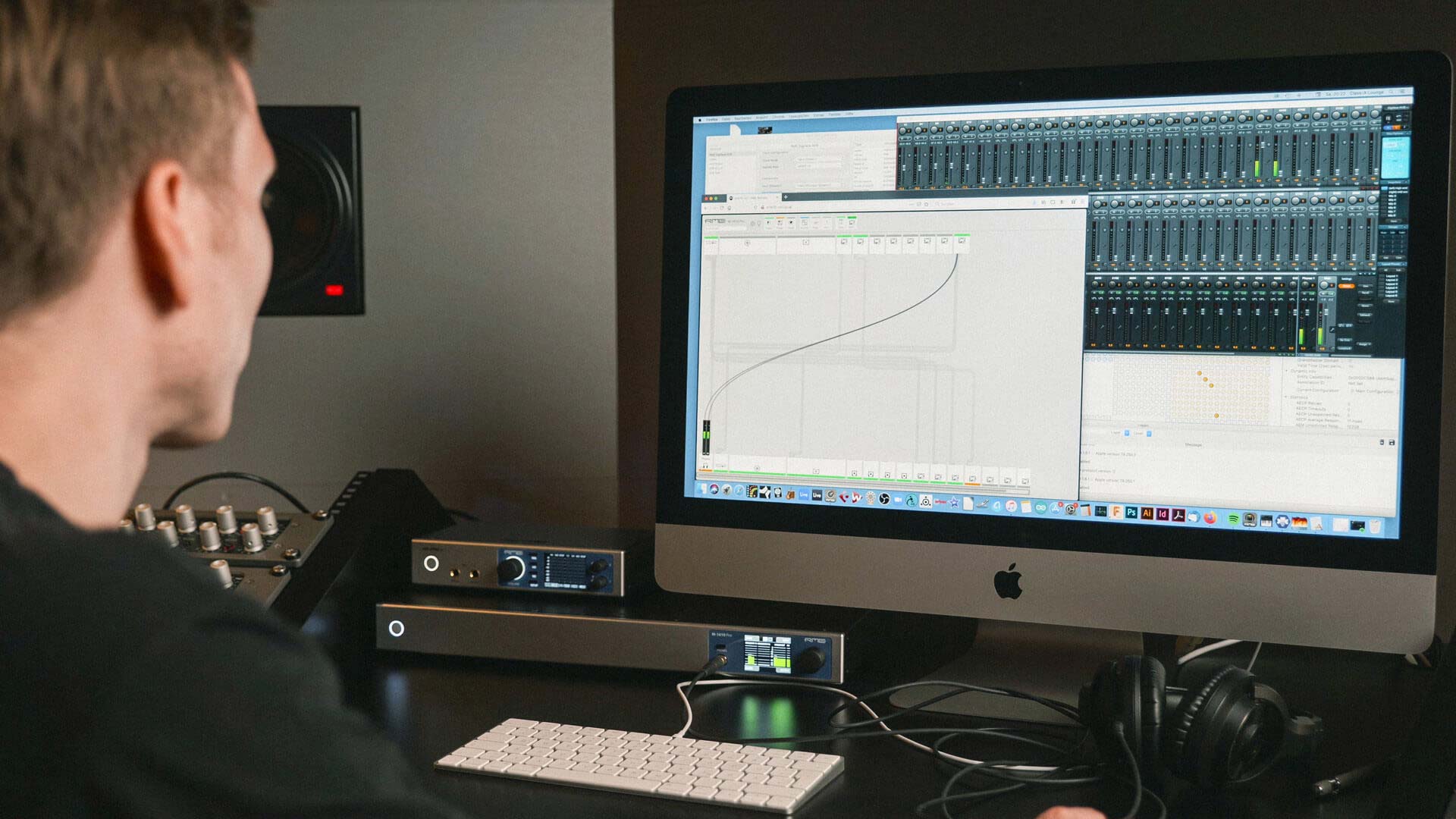
Pairing with other RME devices
Whilst the M-1620 Pro can be used with hardware from any manufacturer, pairing it with one of RME’s audio interfaces also allows users to benefit from TotalMix FX.
A lightweight yet powerful control centre, TotalMix offers a number of advanced routing capabilities, as well as a dedicated Control Room section, saveable mixer states, Talkback, Fader Groups and more!
Any physical input or software playback channel can be routed to any output – making it simple to send channels to and from the M-1620 Pro via ADAT, MADI or analogue – as well as offering a route for other channels to be brought onto a Milan or Dante network.
And for AoIP-based setups, the M1620 Pro can be combined with one of RME’s network interfaces – such as the Digiface Dante, AoX cards or Firenet AIO – providing the building blocks of a powerful, reliable and flexible, next-generation audio network.





















